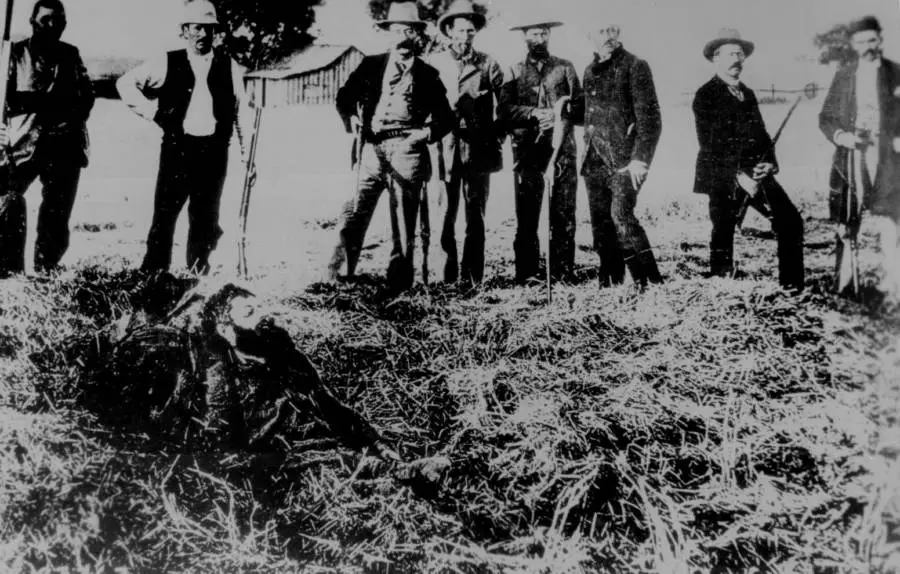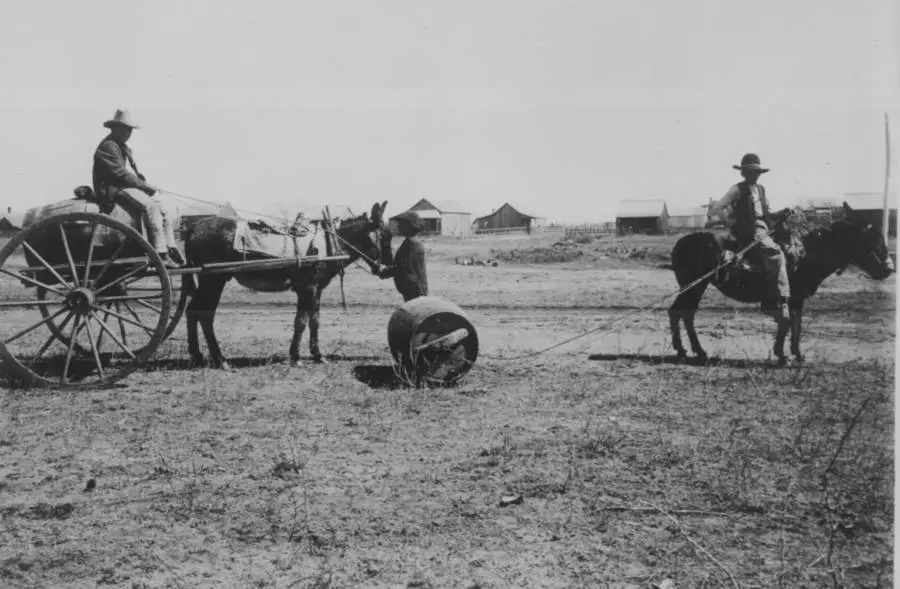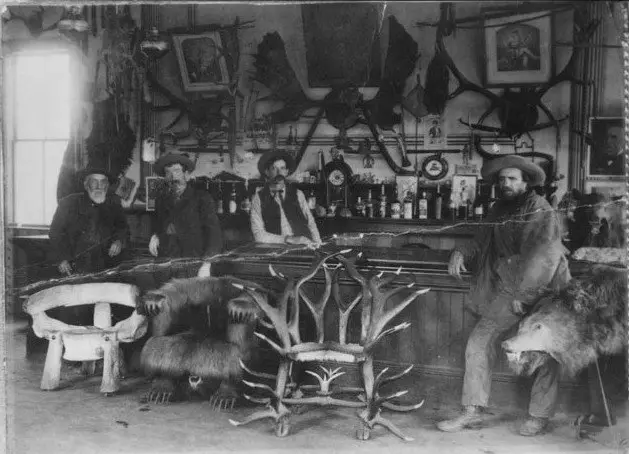The American frontier holds a mythic space in our imaginations. And because of that, it’s a place we envision more through the stories of the Wild West than through its actual history.
The real American frontier wasn’t always as dramatic as it’s made out to be in films, but it was a dangerous place, an untamed land. The settlers who traveled out West in the late 19th and early 20th centuries had to live in defiance of nature and the elements without the comforts of civilization.
Whole families would gather together in wagons and ride off into the unknown, sometimes spending months living in the carriages that pulled them westward. Men, women, and children alike would endure as they crossed over mountains, across rivers, and through deserts in search of a new home and a better life.
When they arrived, they lived in houses built with their own two hands. They had to fend for water and food on their own and set up the very infrastructures of their new towns. Some made their way by working on ranches and farms, others by trapping and trading fur, and some by toiling deep in the mines of the new American frontier.
Life was full of dangers. Sandstorms, tornados, and hurricanes plagued their ramshackle homes. The natives of the land fought to keep it their own. And when lawlessness rose its head, men had to take justice into their own hands.
Wild West has become a legend, but the real world of the American frontier played out just a short time ago. It’s recent enough that we even have photographs of the families that traveled out and the lives they made, little glimpses into life in the real Wild West.

<1>
A party leads their horses across the hot, slick rocks of Navajo Mountain.
Utah. 1909. National Archives

<2>
Riders stop at a Native American reservation. A dog is being roasted over the cooking pot at Fort Belknap Reservation. Montana. 1906. Wikimedia Commons

<3>
An abducted child among his Apache captors. When 11-year-old Jimmy McKinn was rescued and returned to his family, he fought it bitterly, wanting to stay among the Apache. Arizona. 1886. Wikimedia Commons

<4>
Real cowboys, of course, herded cows. Here, one readies his lasso as he looks out on his herd. Genesee, Kansas. 1902. National Archives

<5>
Cowboys branding a calf. Montana. Date unspecified. Wikimedia Commons

<6>
A massive haul of 40,000 buffalo hides stored in a hide yard. Dodge City, Kansas. 1878. National Archives

<7>
Coaches travel down a carriage road. Pikes Peak, 1911. National Archives

<8>
Outlaw John Sontag lies dying on the ground after a shootout with a posse. Stone Corral, California. 1893. National Archives

<9>
A mountainside camp set up for miners. San Juan County, Colorado. 1875. National Archives

<10>
John Heath, after joining in a robbery that turned into a massacre, is lynched by a mob. Tombstone, Arizona. 1884. National Archives

<11>
Buckboard wagons cross a river.
San Carlos, Arizona. 1885.National Archives

<12>
A rider in the desert refills his keg with water from a well. Arizona. 1907. National Archives

<13>
Apaches, including the war hero Geronimo, after their surrender to General Miles. The train behind them will carry them into exile. Nueces River, Texas. 1886. National Archives

<14>
Hauling water across the countryside. Encinal, Texas. 1905. National Archives

<15>
Men gamble over a game of Faro inside a saloon. Bisbee, Arizona. 1900. Wikimedia Commons

<16>
A man, at the site of a new town, looks for a lot. Guthrie, Oklahoma. 1889. National Archives

<17>
The first blacksmith shop in town.
Guthrie, Oklahoma. 1889. National Archives

<18>
Land in a new territory is auctioned off in this tent. California. 1904. National Archives

<19>
The first house built in Dodge City, a sod home built in 1872. Dodge City, Kansas. 1913. Wikimedia Commons

<20>
Men outside a crude ranch play poker. Arizona. Circa 1887-1889. National Archives

<21>
Inside a bar at the Table Bluff Hotel and Saloon. Humboldt County, California. 1889. Wikimedia Commons

<22>
A town starts to grow. The crowd that has gathered is bidding on land that is being auctioned off.
Anadarko, Oklahoma. 1901. National Archives

<23>
Men lay down track for a new railroad, connecting the wild frontier with the world. Arizona. 1898. National Archives

<24>
A gold rush town in Dakota.
Deadwood, Dakota. 1876. National Archives

<25>
A little girl feeds the chickens.
Sun River, Montana. 1910. National Archives

<26>
A family outside their home. A Native American servant holds their child. New Mexico. 1895. National Archives

<27>
A saloon on the streets of an Old West town. Hazen, Nevada. 1905. National Archives

<28>
Typical downtown street of a town on the American frontier. Corinne, Utah. 1869. National Archives

<29>
A teacher and her students stand in front of a sod schoolhouse. Woods County, Oklahoma. 1895. National Archives

<30>
A town gets flowing water for the first time. Perry, Oklahoma. 1893. National Archives

<31>
Cowboys herd cattle across a river.
Missouri. 1910. Wikimedia Commons

<32>
A group of trappers and hunters outside their cabin. Brown’s Basin, Arizona. 1908. National Archives

<33>
Mine workers coming out of the mine shaft. Virginia City, Nevada. Circa 1867-1888. National Archives

<34>
Men cork champagne at the Buena Vista Vinicultural Society. Sonoma, California. Circa 1870-1879. National Archives

<35>
Apaches deliver hay to American settlers. Fort Apache, Arizona. 1893. National Archives

